Furosemide, for which common brands include Lasix, Salix, and Disal, is a medication commonly used in veterinary medicine to treat signs of congestive heart failure in cats. In this article, you’ll learn what furosemide is, how it works, indications for its use, common side effects, and some frequently asked questions.
Furosemide for Cats Overview

About Furosemide for Cats
Furosemide, also commonly referred to by one of its brand names, Lasix, is a medication called a loop diuretic.
A diuretic is essentially a medication that is used to increase fluid output by upregulating urine excretion through the kidneys.
While there are a couple of different types of diuretics, loop diuretics act on a structure in the kidneys called the loop of Henle, hence the name. The loop of Henle is the structure in the kidney largely responsible for reabsorption and retention of water and electrolytes like sodium, chloride, and potassium.
Keeping things simple, furosemide blocks the reabsorption of water and certain electrolytes, leading to increased urine production.
In medical conditions where abnormal fluid build-up has occurred, such as with pulmonary edema (fluid in the lungs) from congestive heart failure, the use of furosemide helps to pull water out of these spaces and get the kidneys to pee it out.
Also Read: Heart Attacks In Cats: Causes, Symptoms & Treatment
What Does Furosemide Do for Cats?
The most common condition where furosemide is used in cats is with congestive heart failure. This is where the proper pumping of blood is compromised by poor heart function. The backing up of blood from poor flow, coupled often by higher pressures and stress on the heart, leads to fluid build-up in the lungs, which is called pulmonary edema.
In cats, a common variant is for fluid to develop around the lungs, which is called pleural effusion.
Whether fluid builds up within the lungs (pulmonary edema), or around them (pleural effusion), this inevitably leads to difficulty breathing as the lungs are unable to fill properly with air. Left untreated, congestive heart failure can lead to death.
When furosemide is given, it helps to pull water out of these abnormal spaces, providing welcome relief for a cat struggling to take in air. This is the mainstay of initial treatment for pulmonary edema. For pleural effusion, manual removal of fluid from the chest is a very common component of treatment as well.
There are a couple of different heart conditions in cats that can lead to congestive heart failure, which is not covered in detail here. Hypertrophic cardiomyopathy (HCM) however, is the most common.
Furosemide may also sometimes be used in severe cases of acute kidney failure especially where urine production has essentially stopped, which is called oliguric renal failure. This is typically only done in a hospitalized setting as a way of jump-starting the kidneys to produce urine and dump out electrolytes so that intravenous fluid therapy can correct electrolyte and acid/base imbalances in the body.
Side Effects of Furosemide for Cats
Cats with a poor appetite and signs of dehydration may be more likely to experience the effects.
While life-saving and necessary, especially for congestive heart failure conditions, furosemide can have concerning side effects to be aware of.
Electrolyte and acid-base imbalances can occur. When furosemide is initially started, it is common to check levels of electrolytes like sodium, chloride, and potassium, more frequently.
Furosemide also does increase stress on the kidneys to some extent as it increases urine filtration and production. Pets with normal kidney function may do just fine on initial and maintenance doses of Lasix, but kitties with pre-existing kidney disease may see worsening of kidney disease.
Labwork is more frequently rechecked for this reason as well, especially looking at the waste products blood urea nitrogen (BUN) and creatinine as markers of changes in kidney function.
Cats with normal appetite and water intake are less likely to see these types of adverse effects. Cats with a poor appetite and signs of dehydration may be more likely to experience these effects.
Other effects which are less commonly reported include non kidney function-related digestive disturbances like nausea, vomiting, and diarrhea.
While furosemide is a common human medication, it can cause harm in cats if used inappropriately. It should only be used when medically appropriate and it should never be used without consultation with a veterinarian.
Overdoses of furosemide can lead to acute kidney failure, electrolyte abnormalities, resulting neurologic changes like lethargy, coma, and seizures, and cardiovascular collapse. Make sure to keep any supply of furosemide in the home inaccessible to pets.
If you are ever concerned that your kitty may have developed side effects while using furosemide, or if your cat has accidentally ingested a supply of furosemide tablets prescribed for a human family member, make sure to contact your veterinarian, the ASPCA Animal Poison Control Center (1-888-426-4435), or Pet Poison Helpline (1-855-764-7661) for further advice.
Furosemide for Cats Dosage
It’s very important not to change or alter your cat’s furosemide dosage without consulting with your veterinarian or veterinary cardiologist.
Because the dose of furosemide varies depending on the severity of the condition it is being used to treat, as well as the presence of any complicating factors like concurrent kidney disease, a specific dosage cannot be provided.
Initial doses are typically started low and increased incrementally based on the success of management. This includes any persistent fluid in/around the lungs, and any changes in kidney function.
Dosage frequency may vary a lot as well. Initially, it may only be given once a day or twice a day, but use three times a day is not uncommon in more severe or refractory cases of heart failure.
It’s very important not to change or alter your cat’s furosemide dosage without consulting with your veterinarian or veterinary cardiologist. In many cases of congestive heart failure, instructions to temporarily increase the dosage or add an extra dose are provided if this is appropriate when seeing any concerning changes in a cat’s heart failure condition, like increased breathing rate or difficulty.
If you feel your cat is experiencing respiratory distress as a complication of congestive heart failure, it is very important to consult with a veterinarian immediately, as emergency care may be needed.
Also Read: Heavy Breathing Cat – The 3 Types Of Heavy Breathing And What They Mean
The oral tablet form of furosemide may take up to an hour to begin being effective. In acute heart failure situations, an injectable form of furosemide that has a quicker onset is typically given, along with close monitoring at the clinic or hospital.
Conclusion
If your cat is experiencing an abnormal heart rate, your veterinarian will do a complete physical exam, including listening to your cat’s heart.
Furosemide is a common mainstay medication, especially as part of a treatment regimen for cats with congestive heart failure.
In this role, it is very important to provide a better quality of life and survival time for these pets. However, furosemide can cause changes in electrolyte balance and kidney function that requires frequent monitoring with lab work so that proper dosage adjustments can be made if necessary.
Always make sure to follow provided dosing instructions when using furosemide and do not make any adjustments on your own without first consulting with your veterinary care provider.
Drug Dosing Disclaimer: We are only able to provide doses for medications that are FDA approved for use in cats and only as the label guidelines dictate. For medications that are used off-label we can only provide guidelines and safety information for use. Safe and appropriate dosing for off-label medications can only be determined by a primary care veterinarian.
We encourage you to work with your veterinarian to determine if a particular medication is appropriate for your cat. Changing or adjusting a dose for your cat on your own without consulting with a veterinarian can carry risk. We do not encourage use of medications prescribed for human use in pets without first consulting with a primary care veterinarian.
Frequently Asked Questions
How Long Does Furosemide Take to Work in Cats?
This depends on whether we’re talking about the tablets or injectable forms. The injectable form given intravenously has an onset of action of only about 5 minutes, which is why it is used commonly in a hospital setting for emergency care.
When given orally, it can take 30-60 minutes to take effect. This is why it is less ideal to use the oral form in emergency situations and always best to have your cat seen by a veterinarian as soon as possible if signs like rapid breathing or respiratory distress develop.
Is Furosemide Safe for Cats?
The safety of furosemide use in any cat must be evaluated based on the severity of the heart condition being treated, and any other signs of illness, like pre-existing kidney disease, poor appetite, and dehydration.
Use of this medication will always be a higher risk for some cats vs. others depending on the situation. This is why furosemide use should only be started with a proper diagnosis, coupled with appropriate monitoring of kidney values and electrolytes through lab work.
How Much Furosemide Can I Give My Cat?
In short, only the dosage most recently discussed with you by your veterinarian or veterinary cardiologist.
The dosage of furosemide may be highly variable depending on what stage of heart disease is present, its severity, and other complicating factors like concurrent kidney disease.
What Does a Diuretic Do for Cats?
A diuretic’s job is to essentially remove fluid from the body. It is most common to see diuretic use in situations where fluid has accumulated in the wrong places secondary to some disease process, like congestive heart failure.
Furosemide is a loop diuretic and is only one kind of diuretic medication. It is, however, the most effective diuretic that can be used in cats for removing excess fluid from the body, and is typically the first line choice.
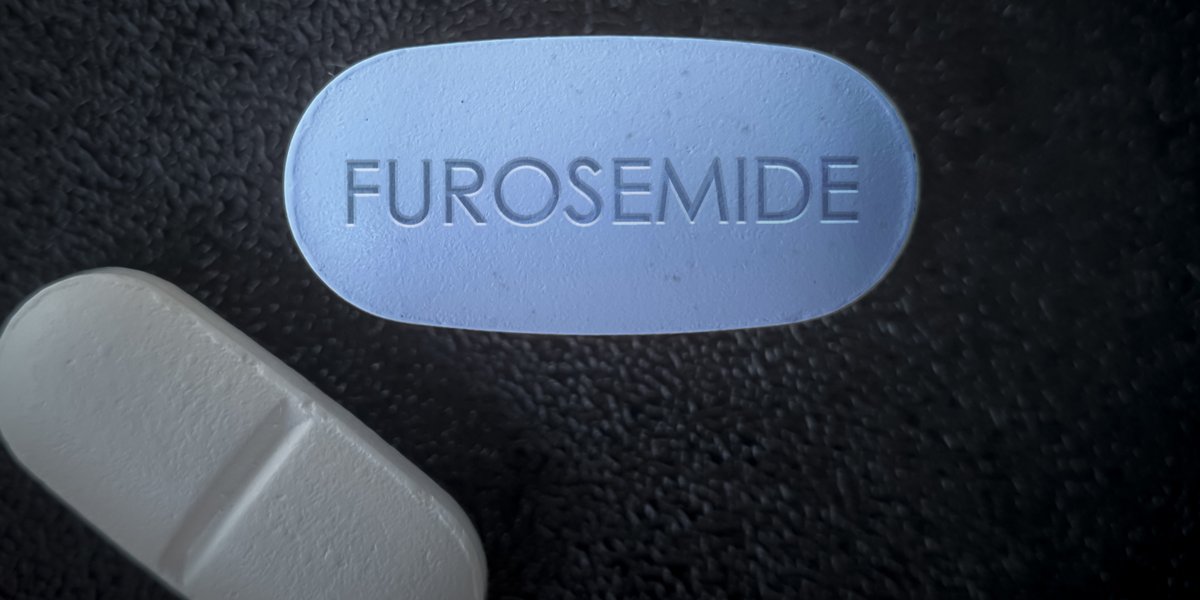
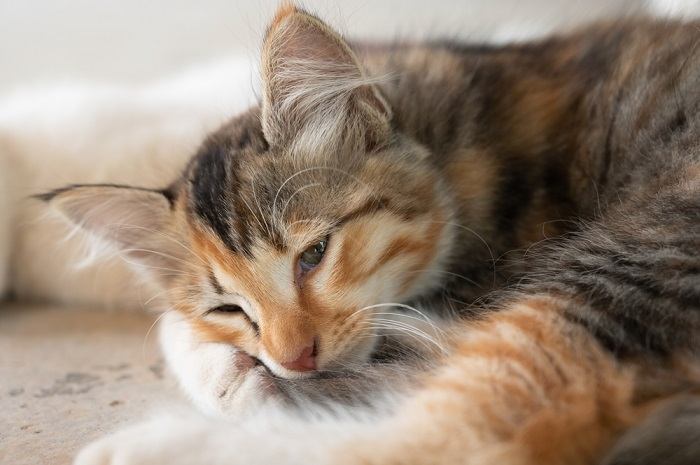
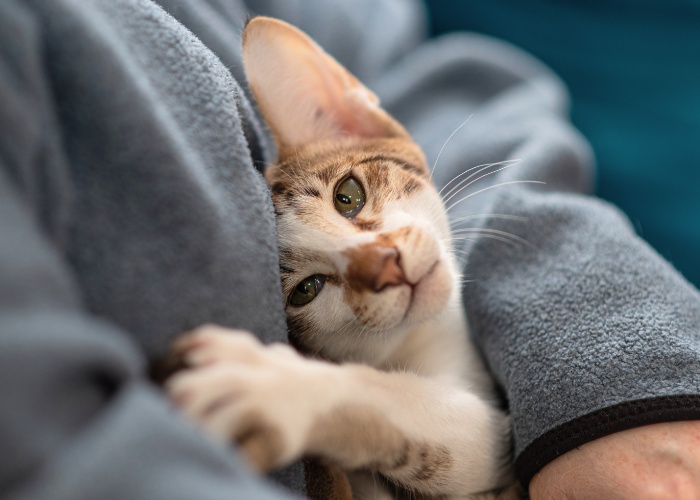
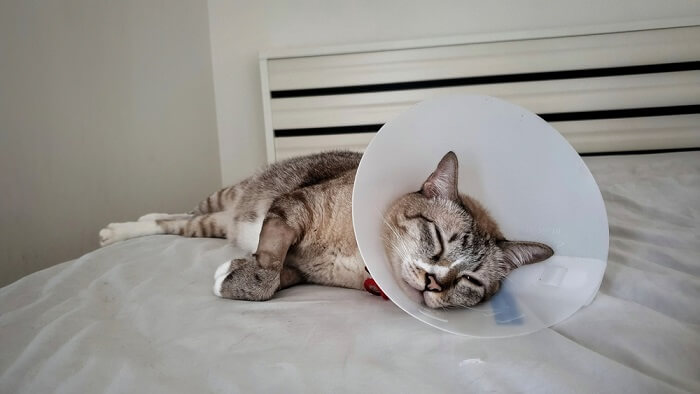
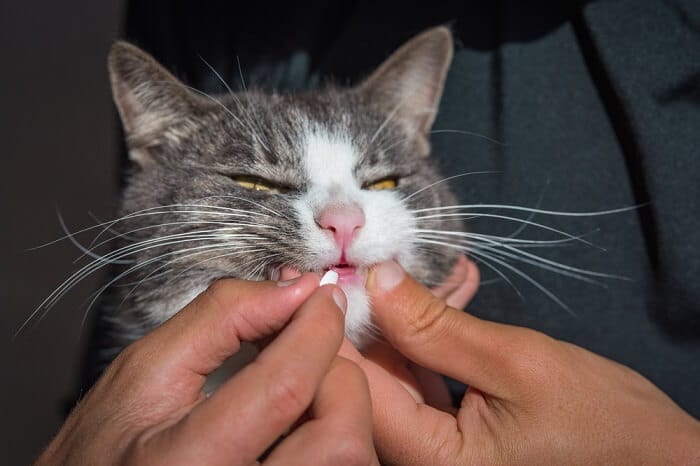
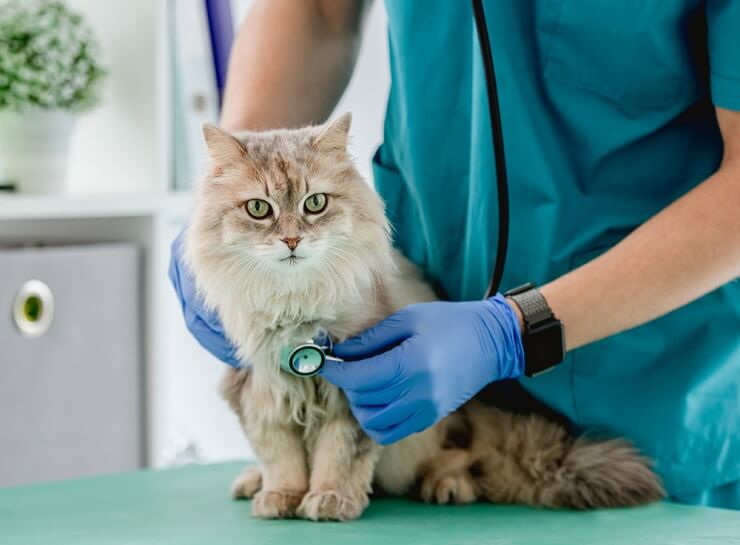






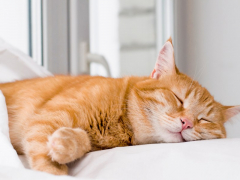

Can it cause constipation?
Hi Mrs. B, yes! Constipation is a common side effect of furosemide for cats. I’d recommend talking to your vet for more information on your cat’s specific case.
Can it be used on cats or kittens that have upper respiratorial infection?
Hi Tina,
No, furosemide is not an appropriate drug to use for an upper respiratory infection. I understand what you’re getting at, since some cats with URI’s seem to have a lot of fluid drainage and it would be great to find a way to “dry it up”. But without getting into too much detail with the physiology, the reasons a kitty has drainage and discharge from an upper respiratory infection is very different from the process that leads to fluid build-up in the lungs. Using furosemide for a cat with a URI would only succeed in putting some strain on the kidneys and lead to dehydration. It’s especially important to not use in young kittens, as their kidney function is not fully developed, and their kidneys should not be put under the strain of this drug.
I prayed about it and have added a teaspoon of pumpkin to his food and it worked!
I will still speak to the vet.
Also, can the fluroseamide cause nausea??
Yes, that’s also a possible side effect. If you are ever concerned that your kitty may have developed side effects while using furosemide, or if your cat has accidentally ingested a supply of furosemide tablets prescribed for a human family member, make sure to contact your veterinarian, the ASPCA Animal Poison Control Center (1-888-426-4435), or Pet Poison Helpline (1-855-764-7661) for further advice.
Hi Mrs b,
Just to add a couple of points to your questions. Constipation is commonly seen with furosemide use, but it’s important to understand that furosemide doesn’t cause constipation directly. Because part of how it works to prevent abnormal fluid accumulation within the body is by removing water from the body through urination, this can lead to a state of dehydration, which can lead to constipation. Cats on furosemide should have plenty of access to water as well as canned food, which has a high water content.
Furosemide can directly cause nausea. But it’s also important to understand that furosemide also requires increased work by the kidneys, which in some cases can also lead to signs of vomiting and nausea. This is why veterinarians regularly check kidney function in patients on furosemide, especially before and after starting it, as well as following any dosage adjustments. This is why it is very important to touch base with your kitty’s vet to discuss any concerns that have developed while on this medication.
Thank you both so very much.
All of his blood tests and urine tests came back great. Thyroid too.
He has fiv and is 11-12 years old. 14lbs
This fluid retention(peritoneal effusion or pleural effusion?) seemed to come out of nowhere.(as with most cats)
I know those two are different so I need I look at the notes to remember correctly.
FIP was ruled out too.
His heart sounded strong and looks normal size with no murmur at all.
They drained 70ml (cc) (can’t remember which term is correct) out of his body! (Thoracocentesis)
He felt so much better.
But now I’m thinking that the meds are making him nauseated.
I am having to syringe feed him. He lets me just fine but he’s not thrilled about it,
He has no appetite.
I will ask about an appetite stimulant and/or antinausea med.
His respiration rate runs between 24-30. The doc said that if it gets near 40 or over then dose the flurosemide 3x per day.
He is drinking and urinating and now finally defecating.
He just mostly lies around like he has the flu.
I also give him viralys for cat herpes virus just in case as that seems to plague fiv cats.
(He does have some eye mucus/crusties)
I also have him on rutin 3x per day and just started that today. (vet let me know about a positive small study)
I need to start taking his temp but the vet said in the report it was 101.2…but that was 4days ago.
I just do not understand how this happened and am in shock. My boy.
I’m so heartbroken and I know you can relate.
I just pray that there is some sort of answer soon.
Oh yes, she did put him on fenbendazole(panacur) 1.8ml 2x per day because of a parasite she saw …I will find the name of it and update, but it looked like a scary looking football like creature.
He is an inside cat so I’m not sure how he got it.
I will update
Thanks for answering
Hello. My cat was prescribed furosemide for fluid she has heart disease 1/2 pill every 24 hours. After her 1st dose she peed on the carpet and acted weird about going back to her litter box. Has anyone else seen this behavior? It’s like she feels so urgent to pee but doesn’t like cat litter anymore? We have 5 boxes for w cats. Scoop daily. Pee pads everywhere she has peed already but still peeing on the carpet rafter meds kick in help! Thank you
Hi Rachel,
Sorry to hear about your kitty’s litter box use woes.
Unfortunately, as a diuretic, furosemide will increase the need for a kitty to urinate more volume and more frequently than what used to be considered normal (water consumption increases as well). This can lead to a change in urinary behavior and urgency. If they associate these negative changes with the litterbox, this can lead to poor litter box usage.
Medical conditions may also lead to changes in urinary behavior as a cat understands that something isn’t quite right with their body, and the inappropriate urinary behavior is a manifestation of that frustration.
It sounds like you have plenty of litter boxes in the home and scooping is not the issue. You might try Cat Attract litter in at least one of the boxes, preferably the one this kitty favors, which might entice her to use it more.
If you feel that she is urinating small amounts more frequently and showing any signs of straining when peeing, it would be good to get in touch with your vet who is overseeing her care, as it is also possible that a separate condition is going on, such as exhibiting stress-related urinary behavior unrelated to the furosemide, or that she coincidentally developed a UTI around the same time.